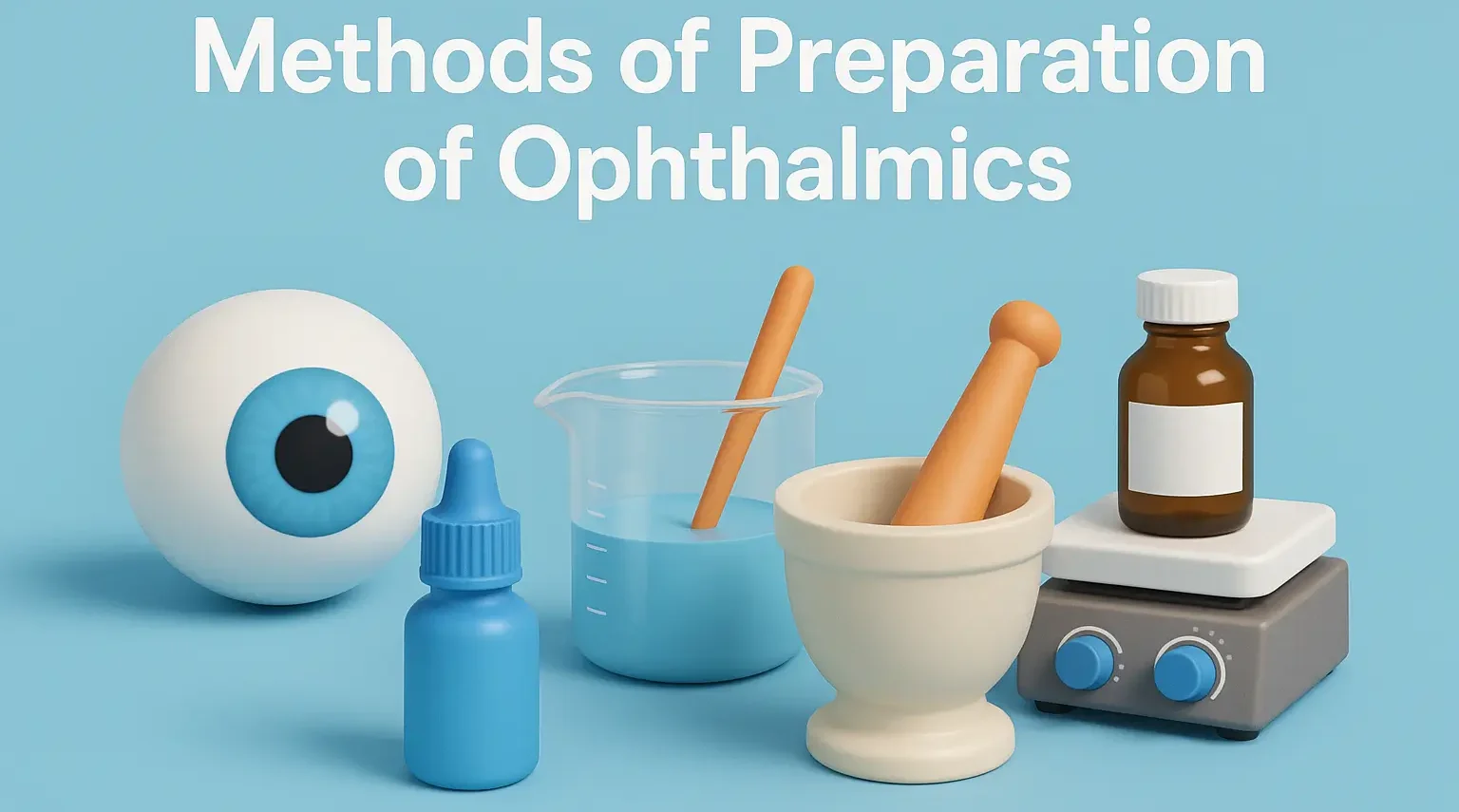- Methods of Preparation of Ophthalmic involve aseptic compounding under sterile conditions to prevent contamination and ensure patient safety.
- Methods of Preparation of Ophthalmic vary for drops, ointments, and gels, requiring precise formulation, pH adjustment, and isotonicity.

-
Aseptic Filtration:
- The formulation (solution) is passed through a sterile 0.22 μm membrane filter, removing bacteria and other particulates.
- The filtered solution is then filled into previously sterilized containers under laminar airflow conditions.
-
Terminal Sterilization:
- If the formulation and container can withstand heat, autoclaving at 121°C for 15–20 minutes is often employed.
- Advantages: higher sterility assurance level.
- Disadvantages: not suitable for heat-labile drugs.
-
Dry Heat Sterilization (for Ointments):
- The base can be sterilized by heating in an oven at 160–170°C for a specific time.
- Drug powders might be sterilized separately if stable to heat, then mixed under aseptic conditions.
-
Gamma Irradiation or Ethylene Oxide:
- Used in specialized cases (e.g., certain packaging materials).
- Less common for routine ophthalmic solutions due to potential effects on drug stability and safety.
Click Here to Watch the Best Pharma Videos!

